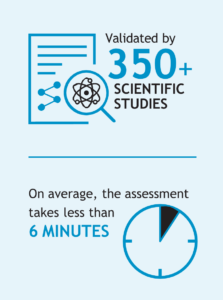How can organization’s radically meet peoples needs?
Reducing Drama Through Understanding: Lessons from a Starbucks Encounter
Life’s everyday interactions often come with a dose of drama, much of which stems from unmet needs or misunderstandings. By taking the time to understand what others are truly seeking, we can often diffuse tension and foster smoother interactions.
At the core of human behavior are drives—innate and developed needs that guide our actions. For example, the drive to survive, such as needing food, is fundamental and non-negotiable. While we may be able to develop better, healthier eating habits, we can’t train ourselves out of being hungry.
Similarly, some drives are core to our personalities, core to what drives us and are non negotiable. these innate drive are hard wired into us and developed based on life core experiences and influence behavior in various ways. Understanding these drives helps us predict and meet needs effectively.
Let’s explore this concept using a familiar setting: a visit to Starbucks.
Understanding Needs: A Starbucks Scenario
Imagine a customer entering Starbucks. One needs Wi-Fi to finish a work project, while another needs a bathroom. If we don’t recognize and address these distinct needs, we might unintentionally exacerbate frustration. Offering the Wi-Fi password to someone needing a bathroom, or vice versa, is akin to misunderstanding the drive and failing to meet the actual need.
The Role of the Predictive Index (PI) in Understanding Needs
The Predictive Index (PI) uses a simple 5-minute assessment and other psychometrics that accurately helps identify drives and needs by measuring behavioral tendencies. It doesn’t label someone as incapable based on skill set requirements but instead helps match people to roles that align better with their inherent drives. For instance, someone mismatched to their role might experience burnout, not because of a lack of ability but because their needs aren’t being met.
Example in a Work Setting:
Consider an employee whose role involves frequent interpersonal interactions, but their PI results indicate a preference for solitary work (They have a low drive for social interactions) and doesn’t like distractions. This mismatch might lead to burnout, not because the employee can’t perform the job, but because the job doesn’t align with their drive for solitude and focus.
For example, if you have someone in a sales role that has a low B the drive for social interaction, gets a bit drained from too much social interaction, and the job requires lots of outreach: shaking hands, “kissing babies and rubbing bellies”, presentations, lots of video calls, sitting and meeting with clients. This person may technically be able to do the job well, but will be misaligned for the long term and will experience burnout opposed to someone with a high B, energized by lots of interactions, which will be more behaviorally aligned for the jobs ongoing requirements.
Understanding Needs to Better Predict Behavior
Human behavior is closely linked to the fulfillment of needs. When individuals’ needs are met, their behavior tends to be stable and positive. However, when these needs are unmet, it can lead to erratic or negative behavior. This inconsistency often manifests in various ways, such as decreased performance, increased frustration, or withdrawal. (Someone interviewed well, did great their first few months, but performance has changed, dropped off, becomes inconsistent, etc.)
For example, if an employee’s need for recognition and appreciation is not addressed, they may become demotivated, leading to a decline in their work performance. Similarly, if a team member’s need for clear communication is not met, it might result in misunderstandings and conflicts within the team. (other considerations beyond the topic scope here such as work environment, culture and power dynamics should be taken into consideration. There is an interesting case study for hospital workers where noise reduction for alerts greatly improved overall well being for employees. the impact of noise reduction on hospital workers’ well-being, particularly focusing on alerts. A notable example is the case study conducted at Cleveland Clinic, which illustrates how addressing noise levels from alarms and alerts can significantly improve staff satisfaction and overall well-being.
Recognizing and understanding these unmet needs is crucial for predicting and managing behavior effectively. Instead of assuming that an individual’s negative behavior is due to personal failings or intentional shortcomings, it is more productive to consider whether unmet needs might be influencing their actions.
By addressing these needs, we can better support individuals in maintaining positive behavior and improving performance. This approach helps in creating a more harmonious and productive environment, where issues are addressed constructively and behavior is understood in the context of underlying needs.
Addressing Unmet Needs and Engagement
When people’s needs are not met, they might act out or disengage, not showing up to meetings on time, missing deadlines, quality of work may be inconsistent, etc. This behavior doesn’t indicate a weakness but rather highlights a mismatch between their needs and the environment or role. By identifying and addressing these needs, we can enhance engagement and satisfaction with current employees and also make better guided matches for roles in the organization.
Broader Implication:
In any setting, whether a workplace or a customer service scenario, acknowledging and addressing needs and unmet needs can prevent disengagement and frustration. It’s not about labeling behaviors as wrong but exploring why they occur and adjusting to better meet those needs and applying this to the talent development in the organization from hiring needs organizational development.
Beyond the Basics: Examples of Effectively Meeting Needs Offering Alternatives
Understanding and addressing needs is not limited to customer service interactions; it applies to any organizational need and also to our daily interactions with friends, family, and colleagues. When we take the time to understand what others are truly seeking, we can reduce misunderstandings and create more harmonious relationships.
Conclusion
By empathizing with and addressing the needs of those around us, we can mitigate much of the drama and conflict that arises from unmet expectations. Just as in a Starbucks scenario, where a simple understanding of needs can improve customer satisfaction, applying this principle in our work, our organizations, and our daily lives can lead to more peaceful, harmonious, fulfilling and productive interactions.
Special thanks to Rhonda Holloway and her team at Six20Partners. Her amazing training examples (highlighted in this blog) and innovative training strategies have helped our clients and numerous organizations with understanding and implementing PI.
Optimize your People Strategy
We believe in Better work, Better world. We customize business solutions for our customers.
Want to optimize your people strategy to match your business strategy?
Schedule a discovery meeting with Sixth Sense Solutions today. Call us at 949-241-6690, or you can reach our team via email at info@SixSenseSolutions.com
Want meaningful insights about you and your leadership style? (Click here)


